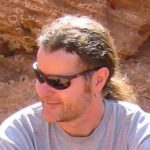Link to Pubmed [PMID] – 17987111
PLoS One 2007 Nov; 2(11): e1123
Mutations in virtually all of the proteins comprising the cardiac muscle sarcomere have been implicated in causing Familial Hypertrophic Cardiomyopathy (FHC). Mutations in the beta-myosin heavy chain (MHC) remain among the most common causes of FHC, with the widely studied R403Q mutation resulting in an especially severe clinical prognosis. In vitro functional studies of cardiac myosin containing the R403Q mutation have revealed significant changes in enzymatic and mechanical properties compared to wild-type myosin. It has been proposed that these molecular changes must trigger events that ultimately lead to the clinical phenotype.Here we examine the structural consequences of the R403Q mutation in a recombinant smooth muscle myosin subfragment (S1), whose kinetic features have much in common with slow beta-MHC. We obtained three-dimensional reconstructions of wild-type and R403Q smooth muscle S1 bound to actin filaments in the presence (ADP) and absence (apo) of nucleotide by electron cryomicroscopy and image analysis. We observed that the mutant S1 was attached to actin at highly variable angles compared to wild-type reconstructions, suggesting a severe disruption of the actin-myosin interaction at the interface.These results provide structural evidence that disarray at the molecular level may be linked to the histopathological myocyte disarray characteristic of the diseased state.
